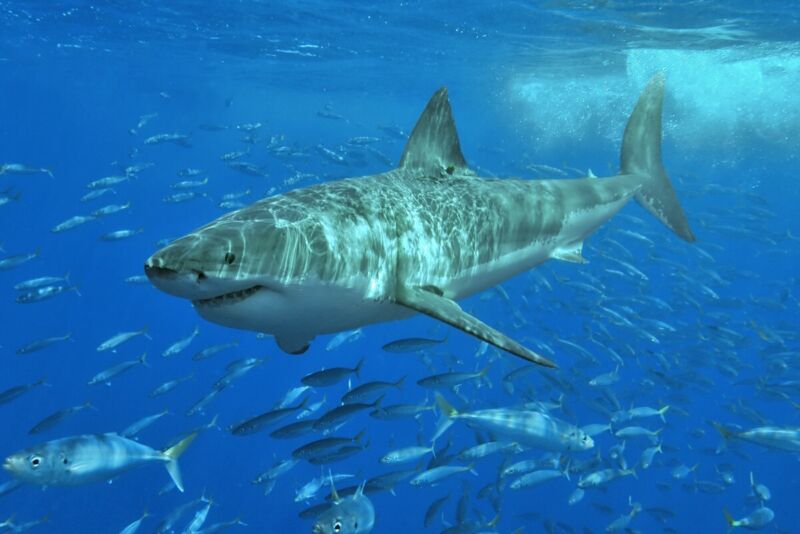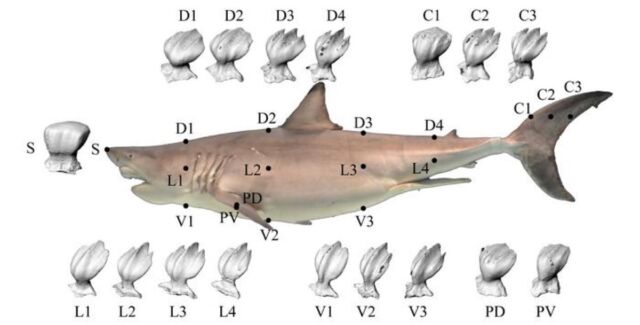
The great white shark (Carcharodon carcharias) is a swift and mighty hunter, capable of reaching speeds as high as 6.7 m/s when breaching, although it prefers to swim at slower speeds for migration and while waiting for prey. A team of Japanese researchers has studied the structure of the great white’s skin to learn more about how these creatures adapt so well to a wide range of speeds. Their findings could lead to more efficient aircraft and boats with greatly reduced drag, according to a recent paper published in the Journal of the Royal Society Interface.
As previously reported, anyone who has touched a shark knows the skin feels smooth if you stroke from nose to tail. Reverse the direction, however, and it feels like sandpaper. That’s because of tiny translucent scales, roughly 0.2 millimeters in size, called “denticles” (because they strongly resemble teeth) all over the shark’s body, especially concentrated in the animal’s flanks and fins. It’s like a suit of armor for sharks and it also serves as a means of reducing drag in the water while swimming.
Pressure drag is the result of flow separation around an object, like an aircraft or the body of a mako shark as it moves through water; the magnitude of pressure drag is determined by the shape of the object. It’s what happens when the fluid flow separates from the surface of an object, forming eddies and vortices that impede the object’s movement. Since the shark’s body is constantly undulating as it swims, it needs something to help keep the flow attached around that body to reduce that drag. Denticles serve that purpose.
There is also friction drag arising from the shear force between the fluid medium and a moving object’s surface. Basically, when an object moves through a fluid, like air or water, the fluid closest to the object’s surface—known as the boundary layer—gets dragged along with it, exerting a force on the object opposite to the direction of motion. The greater the distance from the surface, the greater the velocity of the flow speed.
For instance, mako sharks can swim as fast as 70 to 80 mph, earning them the moniker “cheetahs of the ocean.” Back in 2019, scientists at the University of Alabama determined one major factor in how mako sharks are able to move so fast: the unique structure of their skin, especially the denticles around the flank and fin regions of their bodies. Mako sharks have evolved a distinct passive “bristling” aspect on some of their scales to swim faster. Near regions like the nose, the scales aren’t especially flexible, more like molars embedded in the skin. But near the flanks and fins, the scales are much more flexible.

Journal of the Royal Society Interface
That has a profound effect on the degree of pressure drag the mako shark encounters as it swims. The denticles of the mako shark can flex at angles more than 40 degrees from its body—but only in the direction of reversing flow (i.e., from tail to nose). This controls the degree of flow separation, similar to the dimples on a golf ball. The dimpling, or scales in the case of the mako shark, help maintain attached flow around the body, reducing the size of the wake.




















+ There are no comments
Add yours